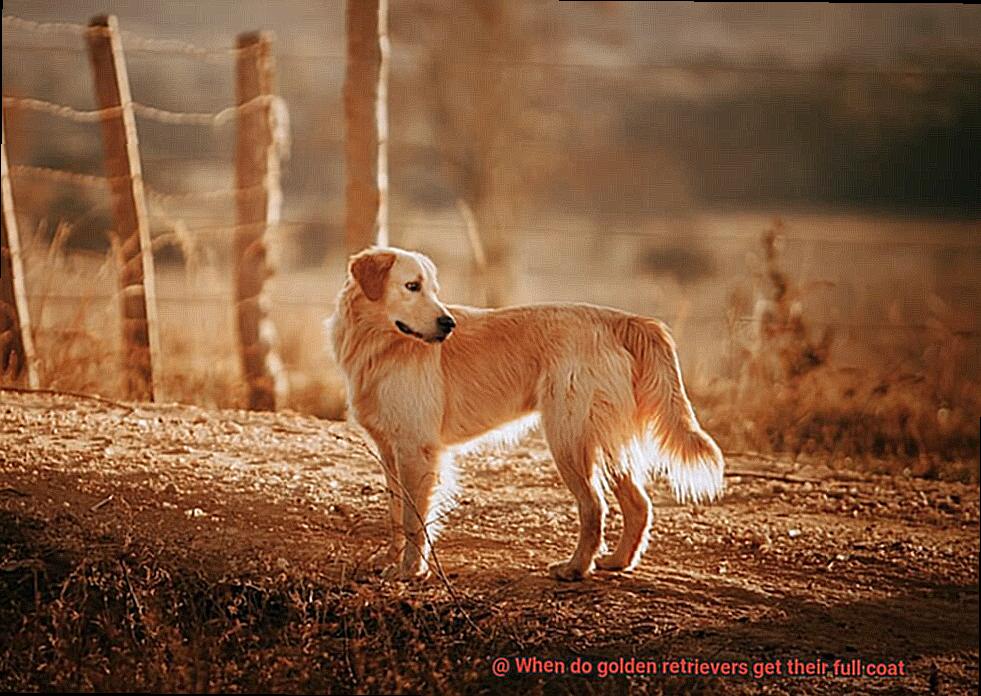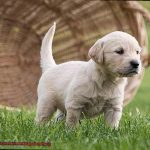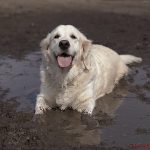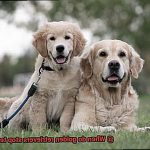Golden Retrievers are a beloved breed known for their friendly nature and adorable appearance. Their coat is one of the most notable physical features that sets them apart from other breeds. But have you ever wondered when your Golden Retriever will get their full coat? As a dog owner or lover, you may have noticed changes in your pup’s fur during their first year of life.
The evolution of a Golden Retriever’s coat is an exciting process to witness. From puppyhood to adulthood, their fur goes through different phases, making it difficult to predict when they’ll reach full coat status. However, several key factors play a significant role in determining when this milestone will occur. These include diet, environment, coat type, and season.
As a proud Golden Retriever owner or someone considering adding one to your family, it’s essential to know when your furry friend will reach their full potential. In this blog post, we’ll delve deeper into these factors and provide valuable insights into when your Golden Retriever will achieve its full coat. So sit back and get ready to discover all there is to know about this fascinating topic.
What is a Golden Retriever’s Full Coat?
Contents
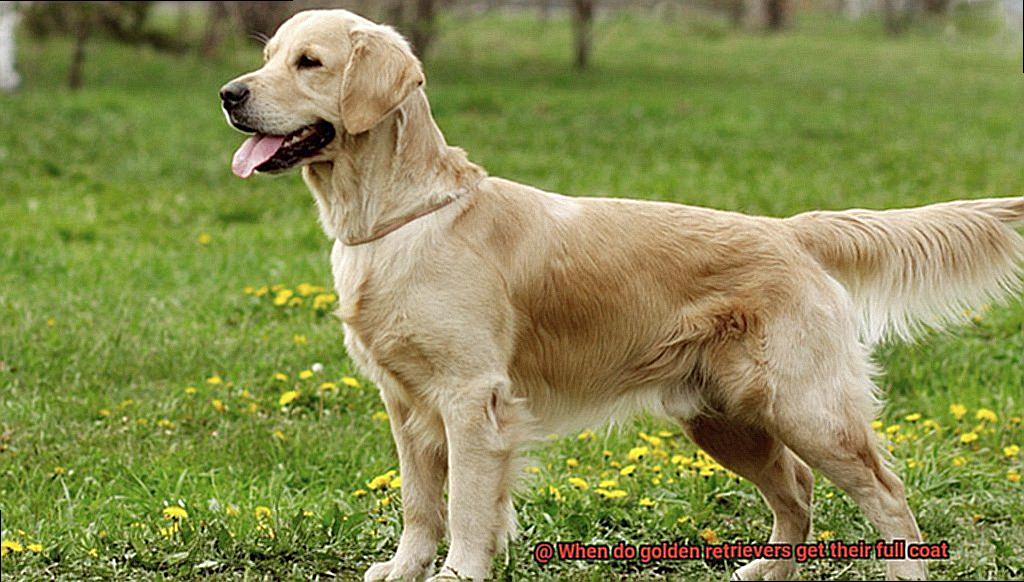
Golden Retrievers are one of the most beloved dog breeds in the world, known for their stunning, fluffy coats. But what does it mean when we talk about a Golden Retriever’s full coat?
A full coat refers to when a Golden Retriever’s outer coat has developed to its maximum length and thickness, typically around 1-2 years of age. The outer coat is made up of longer, coarser hairs that provide protection from the elements, while the undercoat is made up of shorter, softer hairs that provide insulation.
However, the process of developing a full coat can vary depending on a variety of factors such as genetics, diet, and environment. Some Golden Retrievers may take longer to develop their full coat while others may have a fuller coat at a younger age.
During the puppy stage, Golden Retrievers have soft and fluffy coats that may change color as they mature. As they grow older, their coat will become thicker and coarser with a more vibrant golden color. During this process, they will shed their puppy coat and their adult coat will start to come in.
To promote healthy hair growth and maintain a beautiful, fluffy coat, it’s important to provide your Golden Retriever with a balanced diet rich in protein and essential fatty acids. Regular grooming and brushing can also help distribute natural oils and prevent matting or tangling.
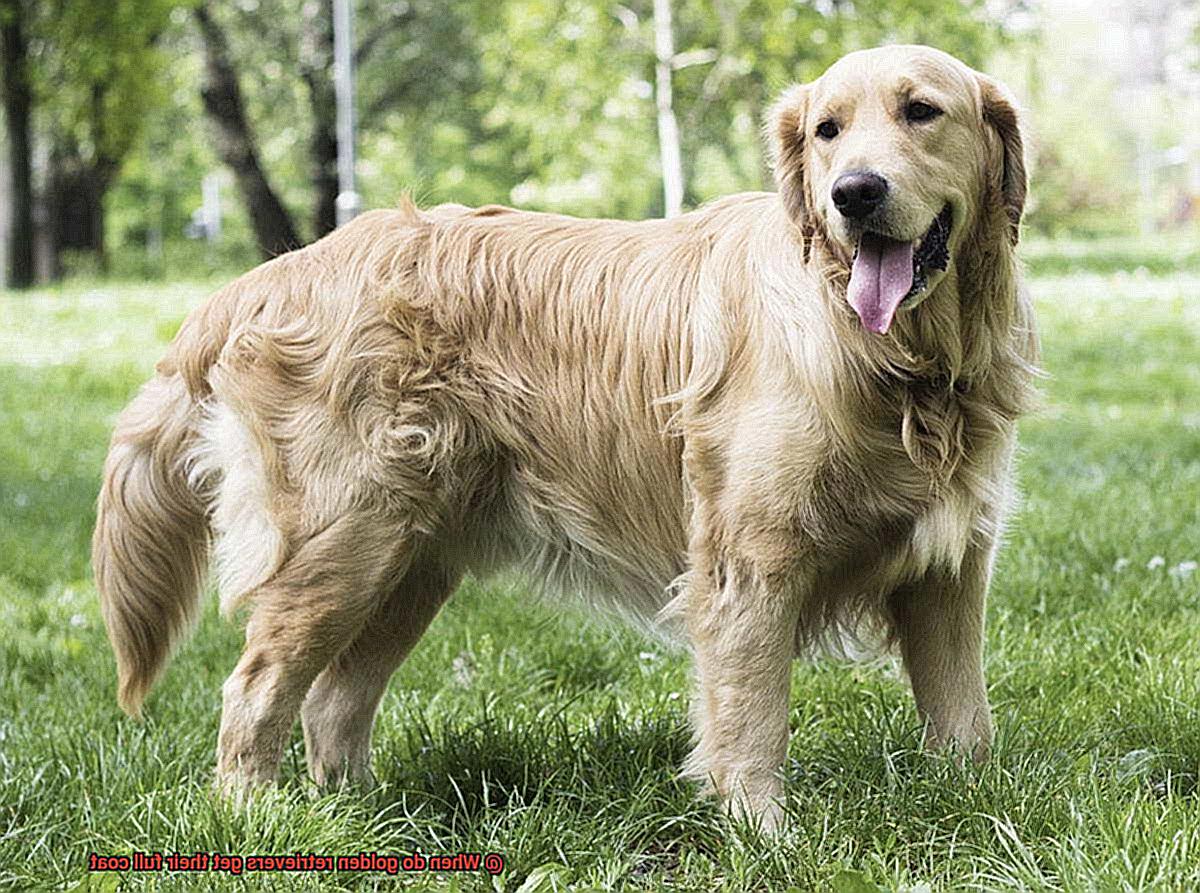
When Does a Golden Retriever Begin to Grow its Full Coat?
Golden Retrievers are renowned for their stunning, fluffy coats in varying shades of gold. One question that dog lovers ask is when their furry friend will grow its full coat. Unfortunately, the answer isn’t straightforward since it varies depending on the dog.
Typically, Golden Retrievers begin to grow their full coat between 1 and 2 years of age. However, genetic factors and environmental conditions can cause variations in this timeline. The process of growing a full coat is gradual and takes time as the coat goes through different stages of growth.
When a puppy is born, its coat is soft and fluffy. As the puppy grows, its coat becomes thicker and coarser. At around six months old, your Golden Retriever’s coat may start to shed as it prepares for its adult coat to grow in. This shedding process can last for several months and may result in a patchy appearance.
Proper grooming during this period is vital to prevent matting and tangles. Regular brushing at least once a week can help remove loose fur and keep your dog’s coat looking healthy and shiny.
As your Golden Retriever reaches adulthood, its coat will continue to thicken and become more lush. Regular grooming is essential to maintain the health and appearance of your dog’s coat. You should invest in high-quality grooming tools and products to keep your furry friend looking their best.
Factors that Affect the Time it Takes for a Golden Retriever to Grow its Full Coat
Golden Retrievers are known for their beautiful, full coats that require regular grooming to maintain their luster. However, did you know that the time it takes for a Golden Retriever to grow its full coat can vary depending on several factors?
One critical determinant of hair growth in Golden Retrievers is genetics. Some dogs may have a slower or faster hair growth rate than others, and some may have thicker or thinner fur. Breeders can influence hair growth by selectively breeding dogs with desirable coat characteristics, ensuring that their puppies inherit these traits.
Another factor that affects hair growth rate is nutrition. A well-balanced diet that includes protein, vitamins, and minerals is key to promoting healthy hair growth. On the other hand, a poor diet lacking in essential nutrients can lead to dry, brittle fur that is prone to breakage.
Environmental factors such as temperature and humidity also play a crucial role in hair growth. Golden Retrievers living in colder climates tend to have thicker, longer hair than those living in warmer areas. High humidity can cause fur to become frizzy and unmanageable, while low humidity can lead to dry, itchy skin.
Finally, grooming practices are vital in promoting healthy hair growth. Regular brushing and bathing help distribute natural oils throughout the coat and prevent matting and tangles. However, using harsh chemicals or over-brushing can damage hair follicles and slow down hair growth.
Shedding of the Puppy Coat
Golden retrievers are a beloved breed known for their beautiful and thick coats, which make them one of the most popular dogs in the world. However, before they get their full coat, golden retrievers go through a shedding process that can last for several months. This shedding process is also known as the puppy coat phase.
During this phase, golden retrievers trade in their soft and fluffy puppy fur for their adult coat. This transformation usually begins around six months old and can continue for up to one year. It’s important to note that not all golden retrievers go through this phase at the same time, as genetics, environment, and other factors can play a role in the timing.
For owners, it’s essential to understand that the shedding during the puppy coat phase can be quite intense. Expect a lot of hair to come off your dog during this time. But don’t worry, it’s natural. While it may be tempting to shave your pup to avoid the shedding altogether, please don’t. Shaving can damage their delicate skin and even ruin their adult coat.
To help manage the shedding during this phase, regular brushing is key. Brushing helps remove loose hair and prevents matting, which can be uncomfortable for your furry friend. Plus, it’s an excellent bonding activity between you and your pup. Additionally, providing your golden retriever with a healthy and balanced diet is crucial for healthy skin and coat.
It’s important to remember that shedding during the puppy coat phase can be influenced by various factors such as diet, stress, and health conditions. So be sure to take care of your golden retriever’s overall health and wellbeing.
Nutrition and Grooming for Healthy Hair Growth
Golden retrievers are known for their luscious, flowing coats that make them the envy of all other dog breeds. But achieving and maintaining a healthy coat requires more than just brushing and occasional baths. Nutrition and grooming are key factors that play a crucial role in promoting healthy hair growth in these furry companions.
A well-balanced diet is essential for maintaining a healthy coat. Protein, vitamins, and minerals are vital nutrients that provide the building blocks for healthy hair growth. Protein, in particular, is crucial as it is the main structural component of hair. Therefore, feeding your golden retriever a diet rich in high-quality protein sources such as chicken, beef, or fish can help promote healthy hair growth.
Regular grooming is also necessary for maintaining a healthy coat. Brushing your golden retriever’s coat helps distribute natural oils throughout their fur, which helps keep their coat healthy and shiny. It also removes any loose or dead hair that could otherwise cause matting or tangling. Regular brushing not only keeps their coat looking great but also provides an opportunity to bond with your furry friend.
When it comes to bathing, it’s important to strike a balance. Bathing your golden retriever is important for removing dirt and debris from their coat. However, over-bathing can strip their fur of its natural oils and cause it to become dry and brittle. Generally, it’s recommended to bathe your golden retriever once every three months or as needed.
It’s also important to keep an eye on your dog’s coat and consult with a veterinarian if you notice any changes or abnormalities. Certain medical conditions such as hypothyroidism or Cushing’s disease can cause hair loss or thinning. Early detection and treatment are crucial for maintaining a healthy coat.
Conclusion
Golden Retrievers are renowned for their luscious, fluffy coats that require meticulous maintenance to keep them looking their best. As a devoted dog owner or enthusiast, it’s vital to comprehend the timeline of when Golden Retrievers attain their full coat. The development of a Golden Retriever’s coat is a gradual process that involves various stages and takes time.
Several factors come into play in determining when your furry companion will achieve its full coat, including genetics, diet, environment, and grooming practices. A well-balanced diet packed with protein and essential fatty acids is essential in promoting healthy hair growth. Regular brushing and bathing help distribute natural oils throughout the coat and prevent tangling and matting.
During the puppy stage, Golden Retrievers have soft, downy coats that may change color as they mature. As they grow older, their fur becomes denser and coarser with a more vibrant golden hue. During this phase, they shed their puppy fur, which can be quite intense but is entirely normal.
In conclusion, comprehending when your Golden Retriever will get its full coat necessitates patience and unwavering dedication to proper care practices.

